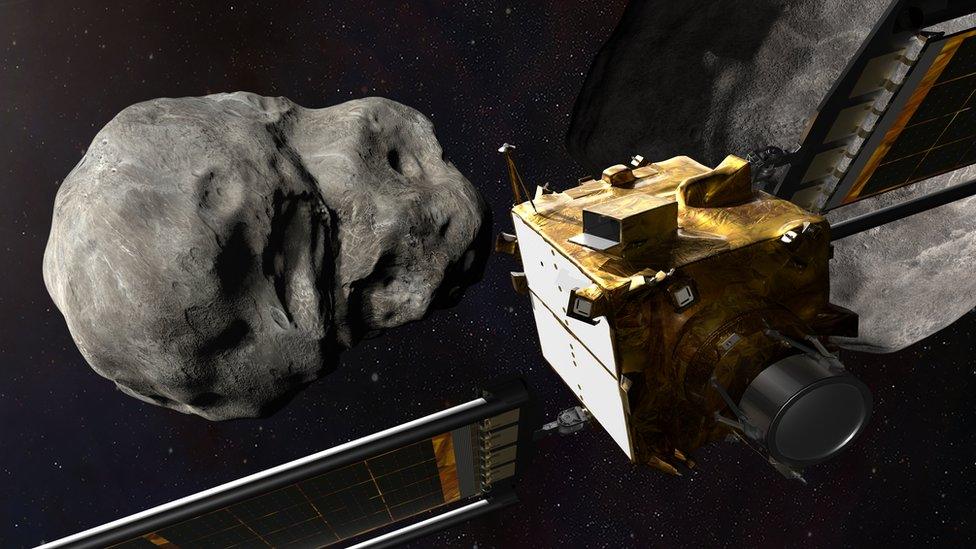Nasa launches world鈥檚 first planetary defence mission
- Published
- comments

It may sound like a scene from a Hollywood movie but Nasa has launched the world's first ever planetary defence mission!
It's called The Double Asteroid Redirection Test (Dart) and it's being tested with the aim to protect Earth from any future potential threat from an asteroid.
A Falcon 9 rocket carrying the Dart spacecraft blasted off at 06:20 GMT on Wednesday from Vandenberg Space Force Base in California.
This space ship is designed to knock into an asteroid called Dimorphos - which is the size of a football stadium - and change its orbit and direction of travel.
Watch: The Falcon 9 rocket blasts off, carrying the Dart spacecraft
Dimorphos isn't a threat to Earth but it's hoped the mission will be a good to test to help prevent any damage from future asteroids.
While no known large asteroid has a significant chance to hit Earth for the next 100 years, only about 40 percent of those asteroids have been found as of October 2021.
"Dart will only be changing the period of the orbit of Dimorphos by a tiny amount. And really that's all that's needed in the event that an asteroid is discovered well ahead of time," said Kelly Fast, from Nasa's planetary defense co-ordination office.
Commenting on the launch, she said: "We're not out of the woods yet, we've got to get out to Dimorphos, but this is a huge step along the way."
How does it work?
Scientists lowering the Dart spacecraft onto a base
It'll take the rocket some time to reach it's target. It's due to collide with Dimorphos in October 2022.
Dart will use roll-out solar panels to provide the sun power needed for its electric engine system.
Then the spacecraft will then deliberately crash itself into Dimorphos at a speed of approximately 6.6 km/s, with the aid of an onboard camera and sophisticated navigation software.
How do we change an asteroids course? (2017)
The hope is that this collision will change the speed of the Dimorphos by a fraction of one percent, but this will be enough to change how it moves - enough to be observed and measured using telescopes on Earth.
Dart is part of a larger, two-part mission called the Asteroid Impact and Deflection Assessment (Aida) mission.
The second part is being run by the European Space Agency and is called the Hera mission.
It'll launch in October 2024 and will study the aftermath of this collision up close to see if it's been successful or not.
- Published13 November 2021
- Published14 September 2021
- Published11 November 2021
